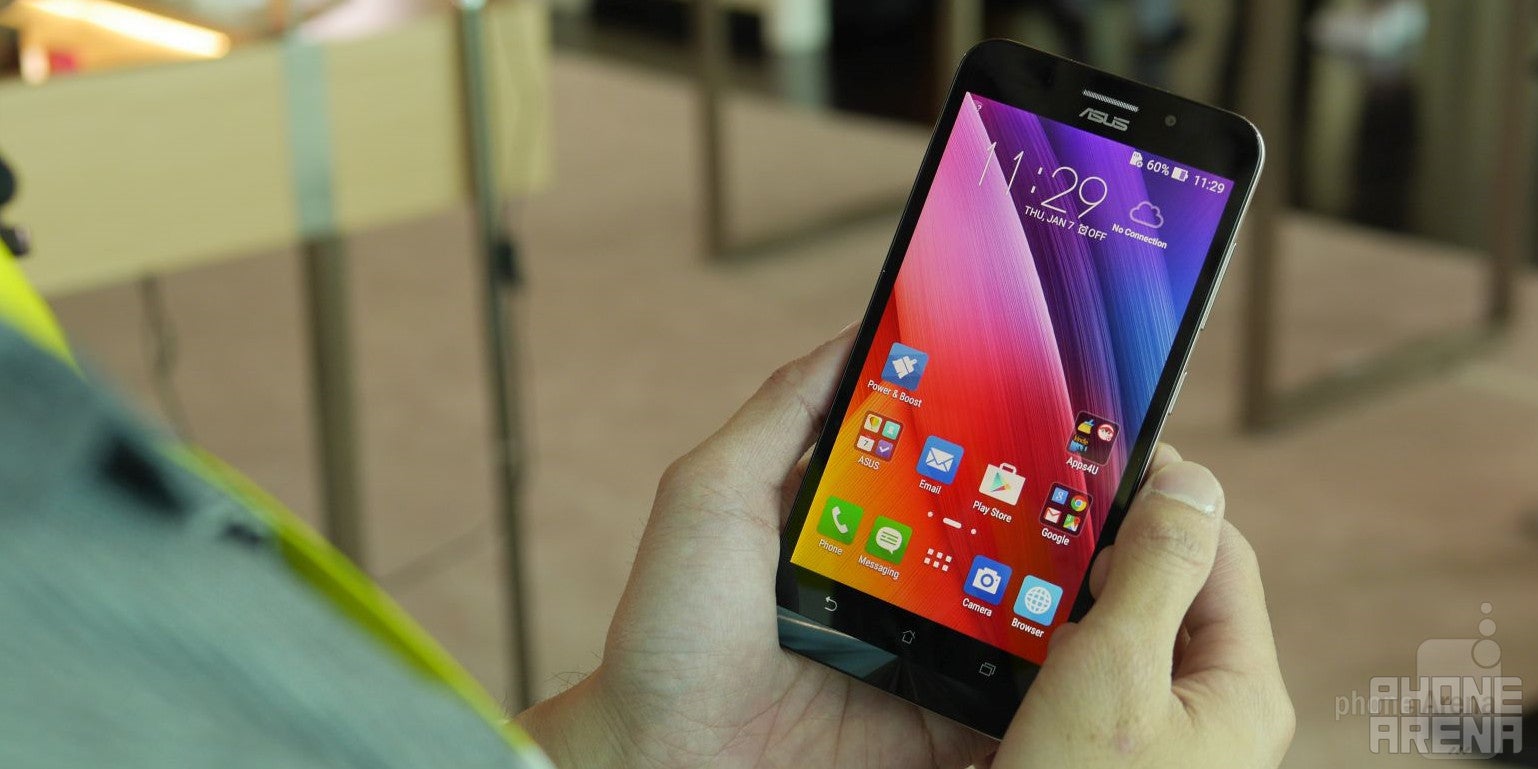Asus Zenfone Max hands-on

Asus had a quiet showing for CES 2016 pertaining to the mobile space, mainly reserving the opportunity to finally announce the availability of the Asus Zenfone Zoom in the US. However, we did manage to stop by their suite to check out other things beside that – namely other variants of its popular Zenfone line. If you’re tired of constantly having to recharge your smartphone in the middle of a work day, the Asus Zenfone Max will ensure that you won’t need to recharge until your day is done; including power users.
Design
For the most part, the phone follows the same design language established by the Zenfone 2 design. It’s not the most beautiful or premium, but people yearning for longer battery life won’t mind its conventional looks. To be fair, though, it bears some alterations of its own – such a metal trim bezel and placing the volume controls and power button on the more accessible right edge of the phone. Honestly, it’s almost hard to fathom that a beefy 5000 mAh is stuffed on the inside because it sports a 10.55 mm profile.
Display
Interestingly enough, it’s not a 1080p display fashioned onto this one, but rather, a 5.5-inch 720 x 1280 IPS panel. Some people will lament over the reduction in its resolution over the Zenfone 2, but quite frankly, it doesn’t deteriorate its sharp looks and punchy color tones. Of course, the choice to go with a 720p screen means that it’s not much of a battery hog.
Interface
By now, we’re quite familiar with Asus’ ZenUI, which on this phone is running on top of Android 5.0 Lollipop. We’ve run through all the ins and outs of this custom Android experience before, so there’s nothing particular new here with the Zenfone Max. It’s quite sufficient for anyone to tell you the truth, seeing that it combines rich personalization of the interface and some productivity features – albeit, it just doesn’t have the true multi-tasking features found on other interfaces.
Processor and Memory
Equipped with a Qualcomm Snapdragon 410 SoC coupled with 2GB of RAM, it manages to run in a manner that’ll please users who aren’t quite as demanding. Needless to say, it handles the basic stuff with no fluff, but we’re skeptical that it’s the kind of thing for heavy gaming.
Camera
The Zenfone 2 isn’t one we’d classify as being the supreme phone for hardcore shutterbugs, but its quality suffices for those who don’t plan on doing much with them besides sharing via social network site. So with that, the Zenfone Max’s 13-megapixel rear/5-megapixel front camera combination should please most users. It helps too that the shooting experience is rich with a myriad of shooting modes to play around with.
Expectations
Most of Asus’ Zenfone smartphones are relatively available for purchase here in the US, mainly through online retail channels. As for the Zenfone Max, however, it’s not something you can pick up as easily from what it seems, and considering that it’s priced here to at roughly around $450, it’s definitely a tougher sell. Then again, those who crave battery life above everything else, it might be worth the investment.













Things that are NOT allowed: